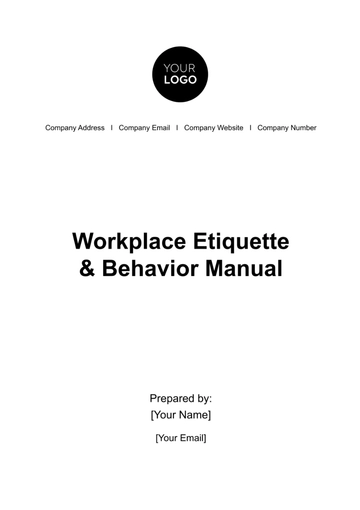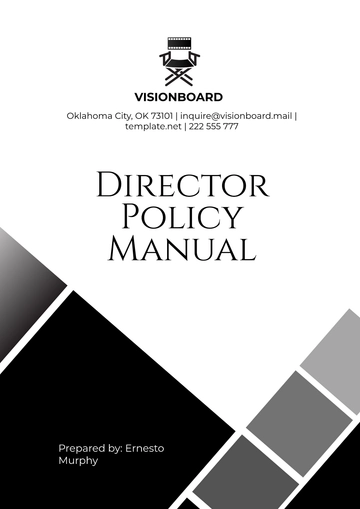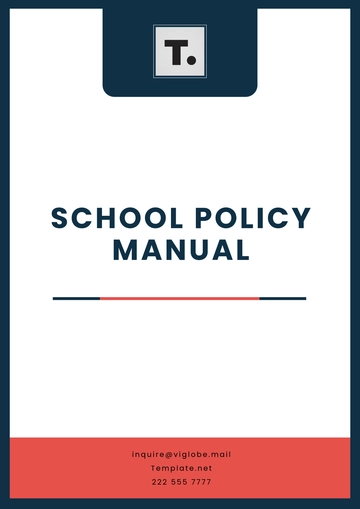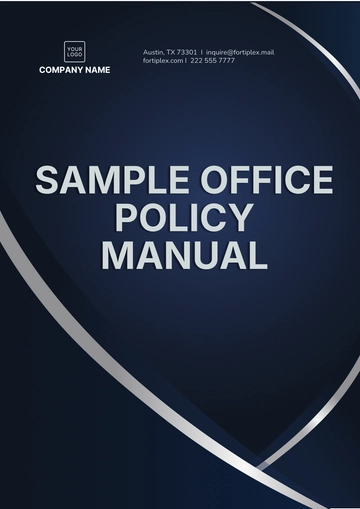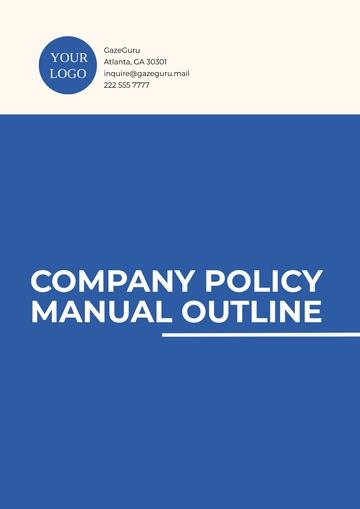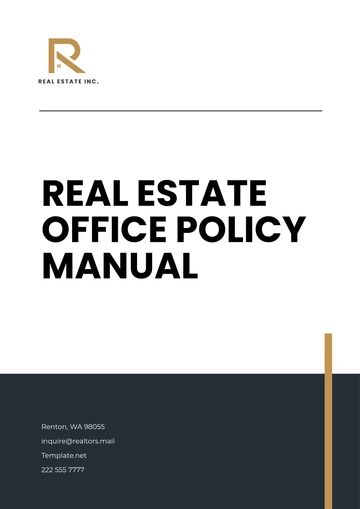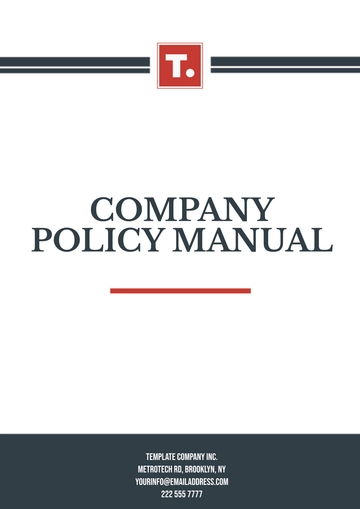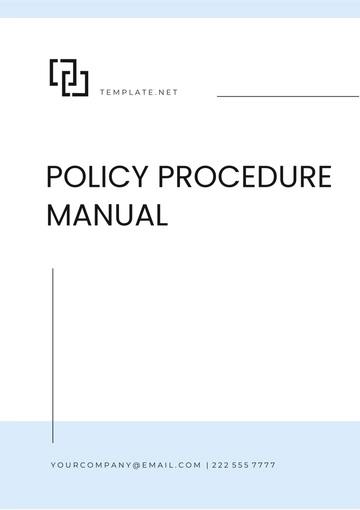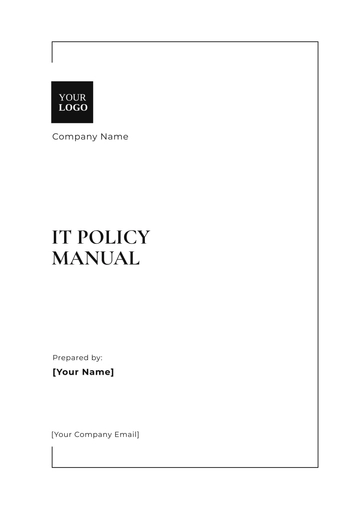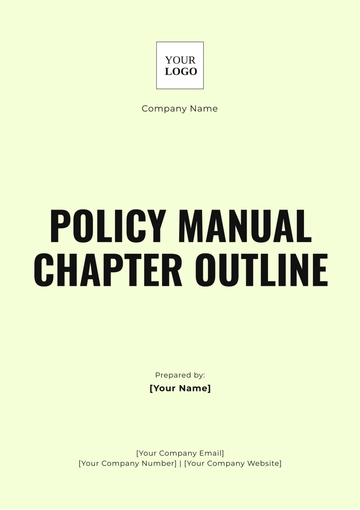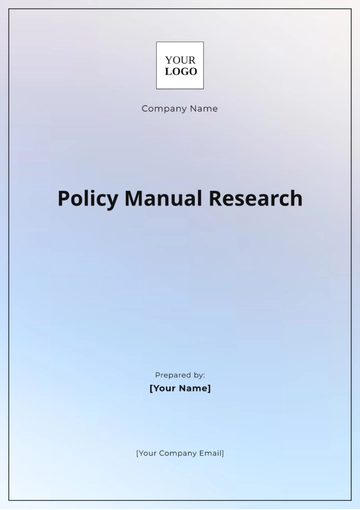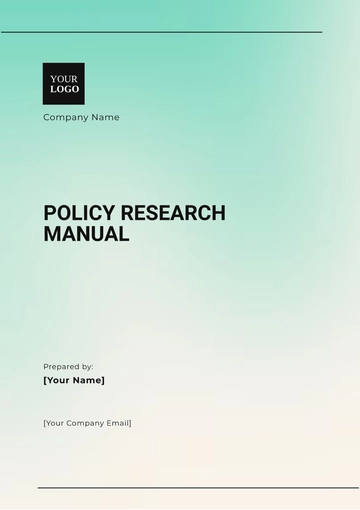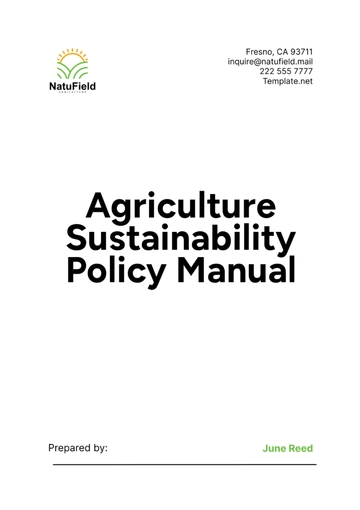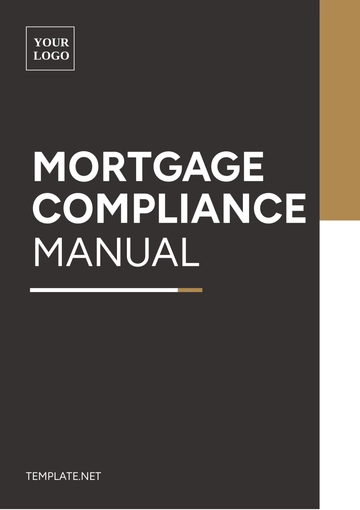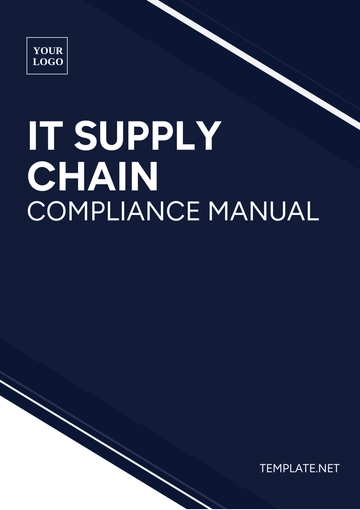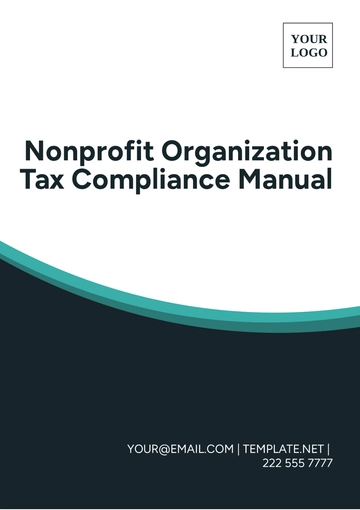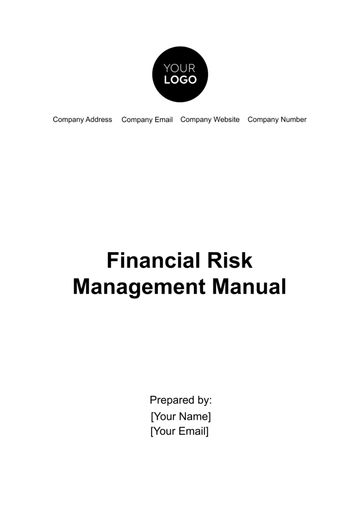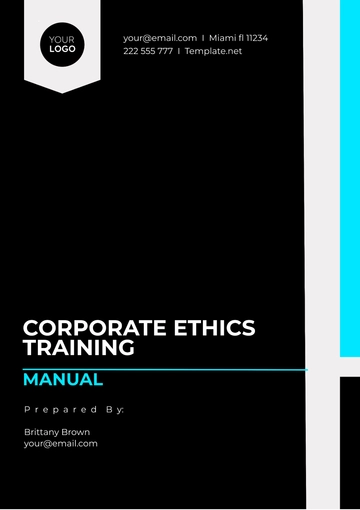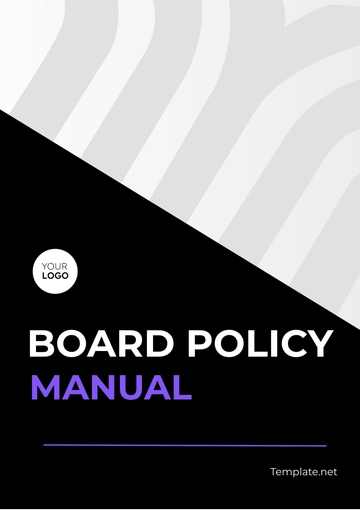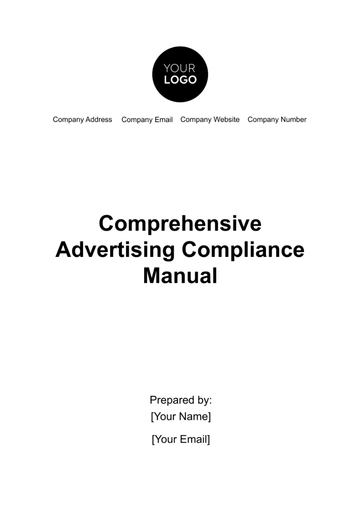Free Real Estate Environmental Policy & Procedure Manual
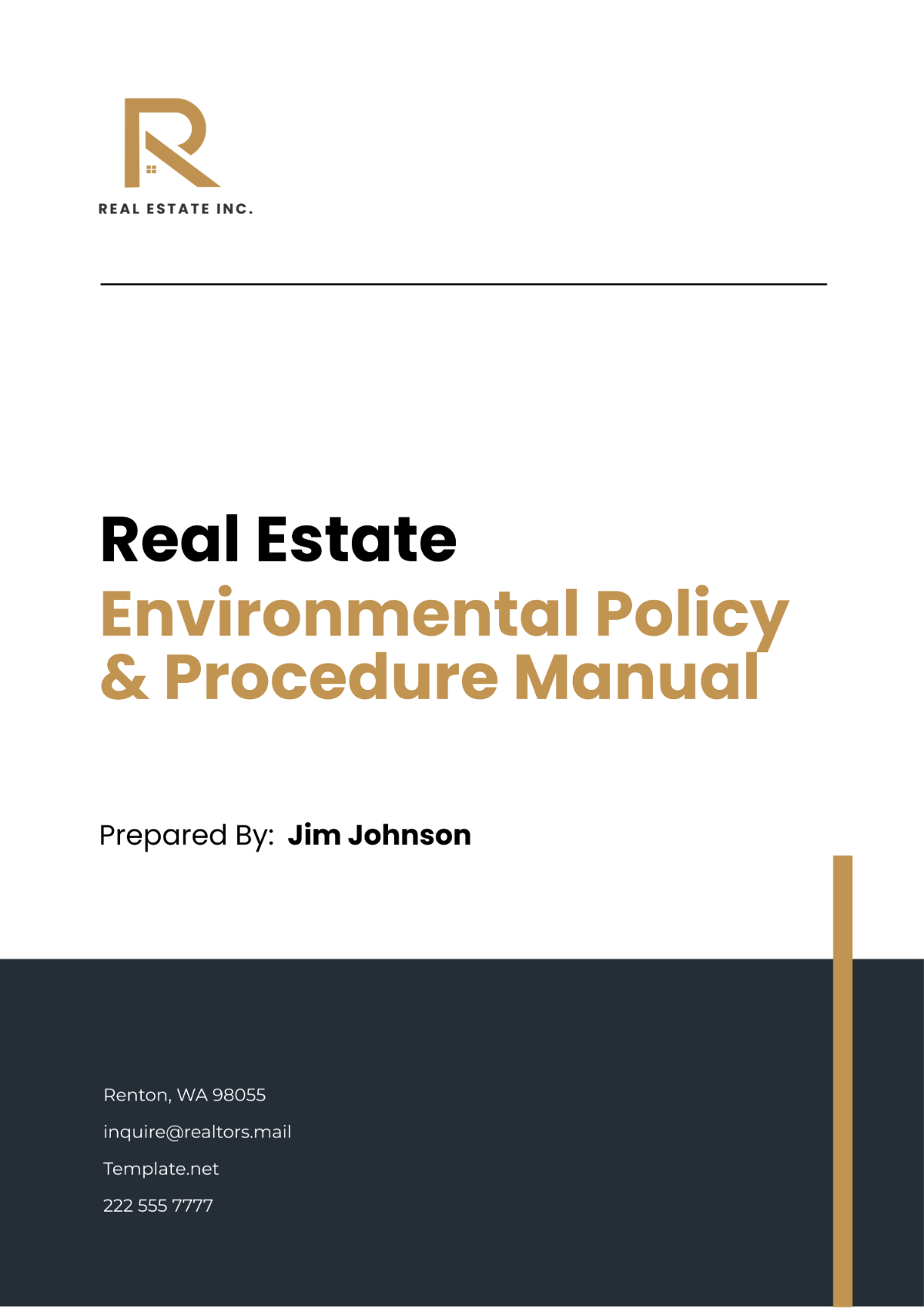
I. Introduction
Welcome to the Real Estate Environmental Policy & Procedure Manual of [YOUR COMPANY NAME]. This document serves as the cornerstone for embedding sustainable and eco-friendly practices within our strategic and operational framework. In line with our commitment to business growth, we recognize the imperative of integrating environmental stewardship into our core activities.
At [YOUR COMPANY NAME], our dedication extends beyond mere compliance with environmental standards. We aspire to be pioneers in sustainable development within the real estate industry, continually seeking to diminish our ecological footprint and elevate our environmental performance. This manual delineates our approach towards achieving these ambitious goals, reflecting our pledge to blend environmental responsibility with business excellence.
II. Environmental Policy
At [YOUR COMPANY NAME], our Environmental Policy is the foundation of our commitment to not only meet but exceed environmental standards and practices. This policy is a testament to our dedication to being responsible stewards of the environment, integral to our business ethos and operations.
Key Commitments:
Compliance with Environmental Legislation
We pledge to not only comply with but strive to stay ahead of environmental legislation, regulations, and standards at local, national, and international levels. This involves a proactive approach to understanding and integrating environmental laws into our daily operations, ensuring that all aspects of our business are conducted in an environmentally responsible manner. Regular audits and reviews are conducted to maintain compliance and adapt to new or changing regulations promptly.
Continuous Improvement
Our journey towards environmental sustainability is ongoing. We commit to continuous improvement through the adoption of innovative practices and technologies that reduce our environmental footprint. This involves setting ambitious environmental performance targets, tracking progress, and being open to adopting new methods and technologies. By fostering a culture of innovation, we encourage our employees to contribute ideas for efficiency improvements, waste reduction, and other sustainability initiatives.
Stakeholder Engagement
Recognizing the importance of collaboration in achieving our environmental goals, we actively engage our employees, suppliers, clients, and the wider community in our sustainability initiatives. This engagement ranges from internal awareness campaigns and training to partnering with suppliers who prioritize environmental sustainability and involving clients in our green initiatives. By working together, we can create a more sustainable future for all stakeholders.
III. Procedures
The procedures at [YOUR COMPANY NAME] are meticulously designed to actualize our Environmental Policy effectively. Each procedure is aligned with our environmental goals, ensuring that sustainability is integrated into every facet of our business.
Environmental Strategies:
Energy and Water Efficiency
Our approach to energy and water efficiency is multifaceted, focusing on both reducing consumption and optimizing the use of resources. Initiatives include the implementation of energy-efficient lighting and appliances, the adoption of smart building technologies to optimize heating, ventilation, and air conditioning (HVAC) systems, and the installation of low-flow water fixtures. These measures are supported by regular energy audits to identify further opportunities for efficiency improvements and are integral to our design and construction standards for new projects.
Waste Management
To minimize waste generation, [YOUR COMPANY NAME] adheres to the principles of reduce, reuse, and recycle. We conduct waste audits to understand waste streams and implement segregation at source to enhance recycling rates. Our procurement policies favor products that are less resource-intensive and have minimal packaging, and we work with our suppliers to take back or repurpose materials. Employee training programs are in place to encourage and facilitate effective waste management practices across the organization.
Employee Awareness
Awareness and engagement are key to embedding sustainability into our corporate culture. We run regular training sessions and workshops for employees to enhance their understanding of environmental issues and the role they can play in addressing them. These sessions cover topics from everyday sustainable practices to innovations in sustainability that can be applied in their work. Additionally, we encourage and reward employee-led initiatives that contribute to our environmental goals, fostering a sense of ownership and commitment to our sustainability agenda.
By expanding on our Environmental Policy and Procedures, [YOUR COMPANY NAME] reaffirms its commitment to leading by example in the real estate industry. Our approach is holistic, integrating sustainability into every aspect of our operations and engaging all stakeholders in our journey towards a more sustainable future. This not only strengthens our business but also contributes to the well-being of our planet and communities.
IV. Team and Responsibilities
The implementation of our Environmental Policy is a collective endeavor that necessitates active participation from every team member within [YOUR COMPANY NAME]. Responsibilities are distributed across the organization to ensure effective execution and compliance with our environmental objectives.
Roles and Responsibilities:
Role | Responsibilities |
|---|---|
Management | Allocate resources, ensure compliance with legislation, promote environmental initiatives. |
Employees | Adhere to environmental procedures, participate in awareness programs, suggest improvements. |
Environmental Officer | Oversee the implementation of environmental strategies, monitor performance, report to management. |
Integrating Sustainability into Every Role
At [YOUR COMPANY NAME], we believe that environmental responsibility transcends specific roles and departments. Whether one is involved in design, construction, finance, marketing, or facility management, there are opportunities to contribute to our environmental goals. For example, our design teams are encouraged to incorporate sustainable materials and energy-efficient systems at the planning stage, while our finance departments are tasked with identifying investments in green technologies that can yield long-term savings and environmental benefits.
Management Leadership and Support
Leadership from management is crucial for embedding an environmental ethos within the organization. Our senior leaders not only provide the necessary resources and set strategic directions but also lead by example, demonstrating a personal commitment to sustainability. This includes participating in environmental initiatives, communicating the importance of sustainability goals to the team, and recognizing and celebrating the achievements of employees who make significant contributions to our environmental objectives.
Collaboration Across Departments
Sustainability initiatives often require cross-departmental collaboration to be effective. For instance, our efforts to reduce energy consumption may involve the facilities team implementing energy-saving measures, the IT department optimizing data center efficiency, and the human resources team promoting energy conservation practices among employees. By fostering collaboration across departments, we ensure that sustainability is embedded in all aspects of our operations.
Training and Development
Ongoing training and development are key to empowering our team to contribute effectively to our environmental goals. [YOUR COMPANY NAME] invests in training programs that not only educate employees about basic environmental practices but also about industry-specific sustainability trends and innovations. These programs are designed to keep our team informed, motivated, and capable of integrating sustainability into their daily work and decision-making processes.
Encouraging Employee Initiative
We recognize that great ideas can come from anywhere within the organization. [YOUR COMPANY NAME] encourages employees at all levels to propose innovative solutions that advance our environmental objectives. This might include suggestions for reducing waste in office operations, enhancing the energy efficiency of our properties, or engaging our communities in sustainability efforts. An open-door policy for suggestions, along with mechanisms for evaluating and implementing viable ideas, ensures that all employees feel valued and engaged in our environmental journey.
Accountability and Reporting
To ensure accountability, [YOUR COMPANY NAME] has established clear metrics and reporting mechanisms for tracking environmental performance. Each department is responsible for reporting on specific environmental metrics, allowing us to measure progress towards our goals. Regular reporting also facilitates transparency, both internally and externally, about our environmental initiatives and achievements.
By expanding upon the roles and responsibilities within our environmental policy, [YOUR COMPANY NAME] aims to create a pervasive culture of sustainability. It is through the collective efforts of our dedicated team that we can achieve our environmental objectives, demonstrating leadership in sustainable real estate practices and making a positive impact on the world.
V. Review and Improvement
At [YOUR COMPANY NAME], we recognize that environmental sustainability is an evolving field, driven by advances in science, technology, and policy. Our commitment to being at the forefront of this evolution necessitates a robust framework for the ongoing review and improvement of our environmental practices. This chapter outlines our structured approach to ensuring that our practices not only meet current standards but are also positioned to adapt and lead in the face of future changes.
Comprehensive Annual Reviews
Our commitment to environmental stewardship is reaffirmed through our annual review process, a cornerstone of our strategy for continuous improvement. These comprehensive evaluations are designed to assess the effectiveness of our environmental policies and procedures over the preceding year, identifying successes and areas for enhancement.
Review Process:
Performance Analysis: We analyze data collected on energy usage, waste management, water conservation, and other environmental metrics to assess our performance against set targets.
Policy and Procedure Assessment: Our environmental policies and procedures are scrutinized for their relevance and effectiveness in achieving our environmental goals.
Stakeholder Feedback: Input from employees, clients, suppliers, and partners is gathered to understand the impact of our policies and identify opportunities for improvement.
Regulatory Compliance: An audit of our compliance with environmental regulations ensures that our practices remain in alignment with current laws and standards.
Dynamic Feedback Mechanism
Our approach to environmental management is inherently collaborative, recognizing the valuable insights that can be gained from our stakeholders. We have established a dynamic feedback mechanism that allows for the continuous collection and integration of suggestions and observations from employees, clients, and industry experts.
Feedback Integration:
Employee Suggestions: An internal platform enables employees to submit ideas for improving sustainability practices within the company.
Client Insights: Regular surveys and forums with clients provide insights into their expectations and experiences regarding our environmental initiatives.
Expert Collaboration: We engage with environmental experts and industry groups to gain an external perspective on our practices and identify emerging trends and technologies.
This feedback is invaluable for refining our environmental strategies, ensuring they remain effective and responsive to the needs and expectations of our stakeholders.
Adaptation to Advances
The field of environmental science and sustainable practices is rapidly advancing, with new technologies, methodologies, and standards emerging regularly. [YOUR COMPANY NAME] is committed to staying abreast of these developments, integrating them into our operations to enhance our environmental performance continually.
Keeping Pace with Innovation:
Technology Adoption: We actively explore and adopt new technologies that offer improved efficiency and reduced environmental impact. This might include advancements in renewable energy, sustainable building materials, and water conservation technologies.
Best Practices: By participating in industry forums and partnerships, we stay informed about best practices in environmental management within the real estate sector and beyond.
Legislative Updates: Our policies and procedures are regularly updated to reflect changes in environmental legislation, ensuring compliance and leadership in legal and ethical standards.
VI. Making Our Manual a Living Document
This Environmental Policy & Procedure Manual is not static; it is a living document that reflects [YOUR COMPANY NAME]'s dynamic approach to environmental sustainability. This adaptability ensures that our environmental initiatives remain relevant and effective, positioning us as leaders in the real estate industry's journey towards a more sustainable future.
Continuous Improvement Cycle:
Review: Conduct annual reviews and ongoing monitoring of our environmental performance.
Feedback: Collect and integrate feedback from all stakeholders to inform improvements.
Adapt: Update our policies, procedures, and practices in response to new developments in environmental science, technology, and legislation.
Implement: Roll out changes across the organization, ensuring all team members are informed and engaged.
By embracing a philosophy of continuous review and improvement, [YOUR COMPANY NAME] is committed to enhancing our environmental stewardship. This approach not only benefits our business and our clients but also contributes to the well-being of our planet and communities. Our dedication to this process reflects our belief that through innovation, collaboration, and commitment, we can achieve our vision of a sustainable and prosperous future.
VII. Conclusion
As we reach the conclusion of the Real Estate Environmental Policy & Procedure Manual, we wish to underscore the significance of the commitments and strategies detailed herein. [YOUR COMPANY NAME]'s dedication to environmental sustainability is not just a facet of our corporate responsibility; it is a core component of our identity and strategy for future growth. This manual is a testament to our pledge to not only adhere to environmental standards but to set new benchmarks for sustainability within the real estate industry.
Our journey towards sustainability is both ambitious and perpetual. It requires the collective effort of our entire team, the support of our partners, and the engagement of our clients. We acknowledge that the path ahead will present challenges, but it is through our shared commitment to these principles that we will navigate these challenges successfully.
We envision this manual not as a static document, but as a living framework that evolves alongside advancements in environmental science, technology, and policy. It is through this lens of continuous improvement that we will review, refine, and enhance our environmental practices, ensuring that [YOUR COMPANY NAME] remains at the forefront of sustainable development.
To our team, partners, and clients, we extend our heartfelt gratitude for your ongoing support and engagement with our environmental initiatives. Together, we are building a legacy of sustainability that extends beyond our projects and properties, contributing to a healthier planet for future generations.
Let us move forward with a renewed commitment to environmental stewardship, embracing innovation, and fostering a culture of sustainability within our industry and our communities. [YOUR COMPANY NAME] is excited to lead by example, demonstrating that environmental responsibility and business success are not mutually exclusive but are, in fact, mutually reinforcing.
Thank you for being an integral part of our environmental journey.
VIII. Contact Us
This manual is designed not only as a guideline for current operations but also as a blueprint for future initiatives aimed at enhancing [YOUR COMPANY NAME]'s environmental responsiveness. It is our hope that through diligent application and continuous improvement of these policies and procedures, we will make a lasting, positive impact on our planet.
For further information, clarifications, or suggestions regarding this manual, please reach out to us via email at [YOUR COMPANY EMAIL] or phone at [YOUR COMPANY NUMBER]. Your input is invaluable to our shared goal of fostering a sustainable future.
- 100% Customizable, free editor
- Access 1 Million+ Templates, photo’s & graphics
- Download or share as a template
- Click and replace photos, graphics, text, backgrounds
- Resize, crop, AI write & more
- Access advanced editor
Set the standard for environmental stewardship in real estate with Template.net's Environmental Policy & Procedure Manual Template. Tailored for sustainability-focused professionals, this comprehensive guide empowers you to establish robust environmental practices seamlessly. With our AI editor, effortlessly customize every detail to align with your organization's values and goals. Lead the industry towards a greener future with this essential resource.


